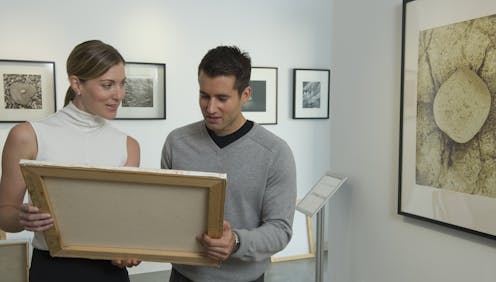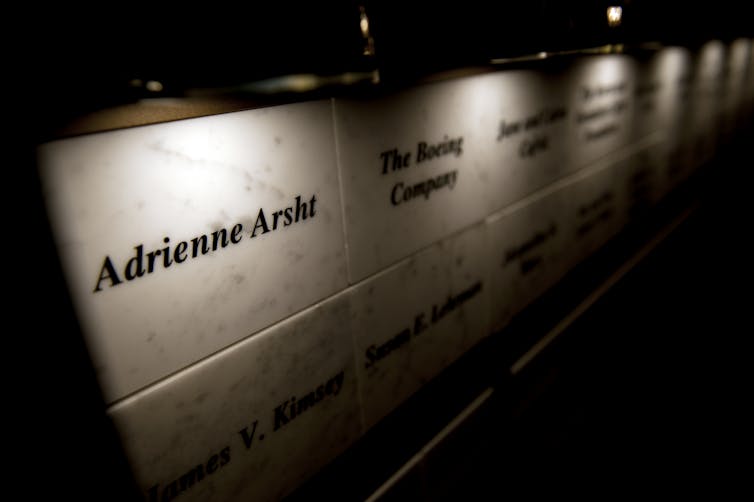The advantages of museum philanthropy that builds staff diversity rather than new wings and gallerie
US museums have sought to improve their diversity, equity and inclusion for decades, but progress has been slow.

Retired financier Oscar Tang, along with his wife, Agnes Hsu-Tang, are giving the Metropolitan Museum of Art US$125 million. Their gift, announced in November 2021, will help pay for a long-planned renovation of the New York City museum’s Modern and Contemporary Art wing.
The gift was the largest donation the museum has ever received and led the couple to rank No. 22 among the top 50 U.S. donors of 2021, according to the Chronicle of Philanthropy. The donors placed no official requirements on how the money should be used but expressed support for the Met’s plan to spend it on a new space that will exhibit work by artists from a wide range of countries and backgrounds.
As a scholar of museum studies, I would welcome a more inclusive vision for the Met’s collection in a state-of-the-art gallery. However, I believe that the institution would enhance its inclusiveness more by taking steps to increase the diversity of its staff from top to bottom, particularly at the entry level.
30 years of seeking more equity in art museums
Calls for greater social justice in museums began to pick up three decades ago.
The American Alliance of Museums, the largest professional museum organization, published a report in 1992 that highlighted this problem and called for museums to “become more inclusive places that welcome diverse audiences” and to “reflect our society’s pluralism in every aspect of their operations and programs.”
Since then, museums have acknowledged their need to increase diversity of their collections and exhibitions by reducing the over-representation of straight white male artists.
Eventually, this effort broadened to include a wide range of equity issues, as well as access for people with disabilities and various kinds of inclusion. In 2020, with the deaths of George Floyd, Breonna Taylor and Ahmaud Arbery, as well as the COVID-19 pandemic, this movement gained momentum at the Met and other museums.
A blocked pipeline
Due to historical inequalities, young people of color embarking on an art museum career are less likely to have families that can fund their unpaid internships or volunteer work. Done right, these types of early training opportunities help ensure that candidates of color will join the pipeline of museum professionals.
Lonnie Bunch made this case in the Alliance’s Museum magazine in 2000, long before he became the first Black secretary of the Smithsonian Institution. Among his many responsibilities: overseeing 21 museums, including two in planning stages.
Despite Bunch’s personal rise to prominence and the Smithsonian’s recent hire of Jane Carpenter-Rock, who is also Black, as a new deputy director, museums haven’t made enough progress toward this goal in recent years.
The most recent comprehensive demographic survey of art museums, which the Andrew W. Mellon Foundation conducted in 2018, found that only 28% of all museum staff were people of color. It also determined that only 16% of curators and 12% of top executives were nonwhite.
Although there is no data yet regarding the number of people of color hired at museums since 2020, early reports suggest incremental increases and a sense of isolation among curators hired into high-profile museum positions.
How might museums do better? There are many options, such as making grants contingent upon making strides toward a more diverse workforce, or engaging in diversity training. One solution that I rarely hear mentioned is paying entry-level staff higher wages.
A curator assistant at a major metropolitan art museum can make as little as $36,000 to start, whereas a senior curator at the same-sized institution can make four or five times as much.
This wage differential may have made sense in the past, when these jobs didn’t require educational credentials. Today, however, most new hires have earned an expensive master’s degree.
Even getting that credential doesn’t always help launch a career in the arts. Alumni of the program I direct often tell me they have left coveted positions for higher-paid work in another field. People of color typically enter the workforce with less generational wealth than their white peers, so it stands to reason that they are more likely to leave the profession due to low compensation, if they enter it at all.
A significant gift
In August 2020, Adrienne Arsht, a banker and arts philanthropist who previously shored up the finances of the Miami Center for the Performing Arts, pledged $5 million for the Met to fully fund paid internships for 120 graduate and undergraduate students per year.
Students without the financial means to undertake an unpaid internship would now participate in the Met’s valuable mentor and training programs, “increasing opportunities and supporting equity in the art field,” Arsht promised. In an interview, she said that applications went up 300% once the internship positions became paid.
[Like what you’ve read? Want more? Sign up for The Conversation’s daily newsletter.]
I see Arsht’s gift as a possible model for other wealthy donors who wish to make long-term contributions to museum diversity, equity and inclusion. A few similar examples have emerged, including a $462,000 grant from the Andrew W. Mellon Foundation that’s supporting long-term paid internships at the National Gallery of Art for students attending Howard University, a historically Black school.

Toppling conventional wisdom
If the Met wants to present a more global and inclusive vision of modern and contemporary art, it does not need to renovate its Modern and Contemporary wing. It could hang more diverse artwork on the walls it already has and use new funds from donors to compensate its staff differently so that early career hires of color have more of an incentive to stick around.
But, as I have long seen firsthand, museum leaders and fundraisers generally presume that big donors don’t want to help support day-to-day expenses, such as salaries.
Instead, conventional wisdom holds that major philanthropists prefer to make gifts that are used to build new spaces and will give them the opportunity to see their own name splashed on those new walls.
The Met’s internship program, which as it happens now bears Arsht’s name, is proof that some donors are willing to fund unglamorous expenses such as salaries for young professionals and students. If more philanthropists were willing to do that, it would surely help increase the diversity of museum staff in the long term.
Lisa M. Strong does not work for, consult, own shares in or receive funding from any company or organization that would benefit from this article, and has disclosed no relevant affiliations beyond their academic appointment.
Read These Next
From truce in the trenches to cocktails at the consulate: How Christmas diplomacy seeks to exploit s
World leaders like to talk up peace at Christmastime. But alongside the tales of seasonal breaks in…
As DOJ begins to release Epstein files, his many victims deserve more attention than the powerful me
Powerful men connected to Jeffrey Epstein are named, dissected and speculated about. The survivors,…
People are getting their news from AI – and it’s altering their views
Even when information is factually accurate, how it’s presented can introduce subtle biases. As large…






